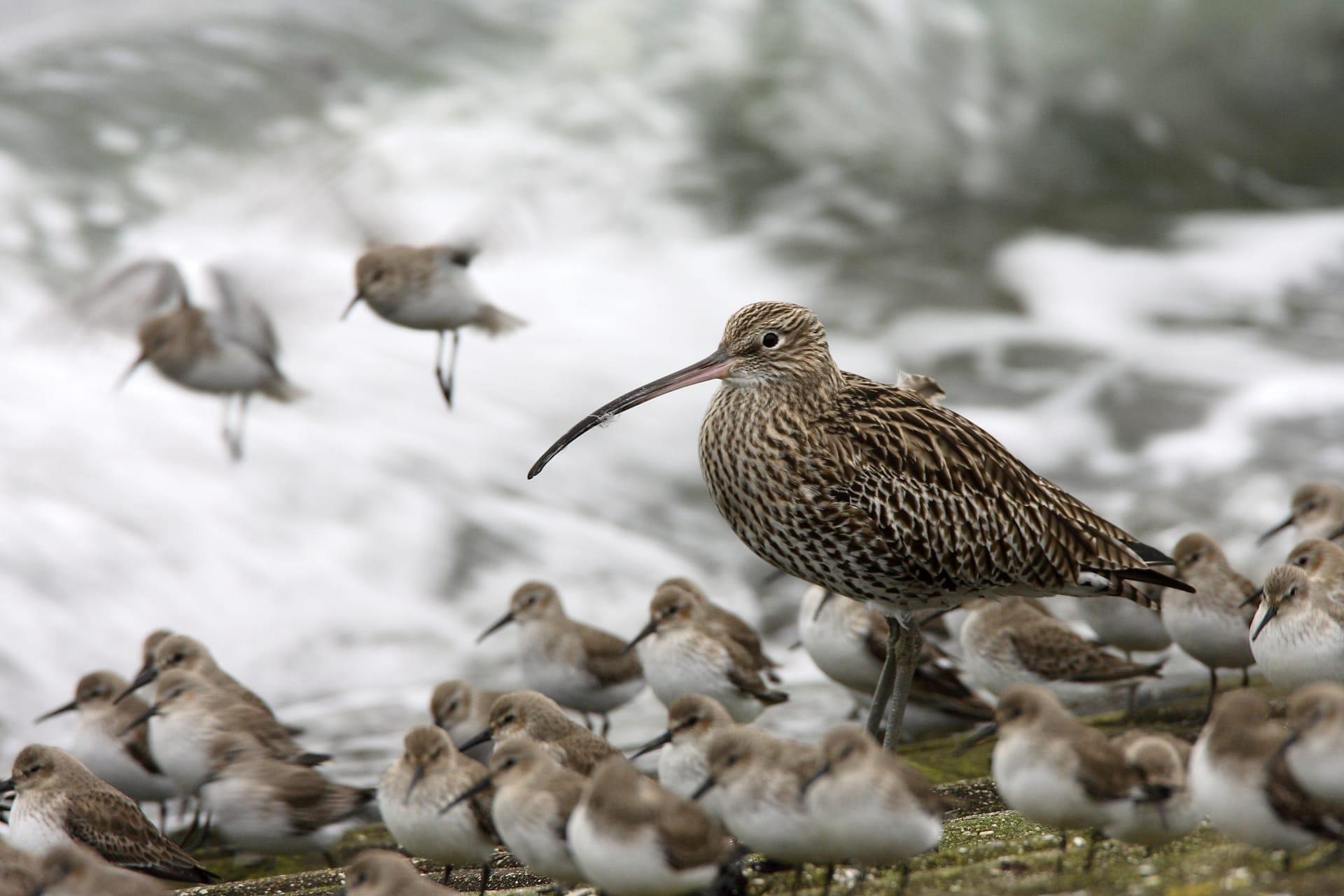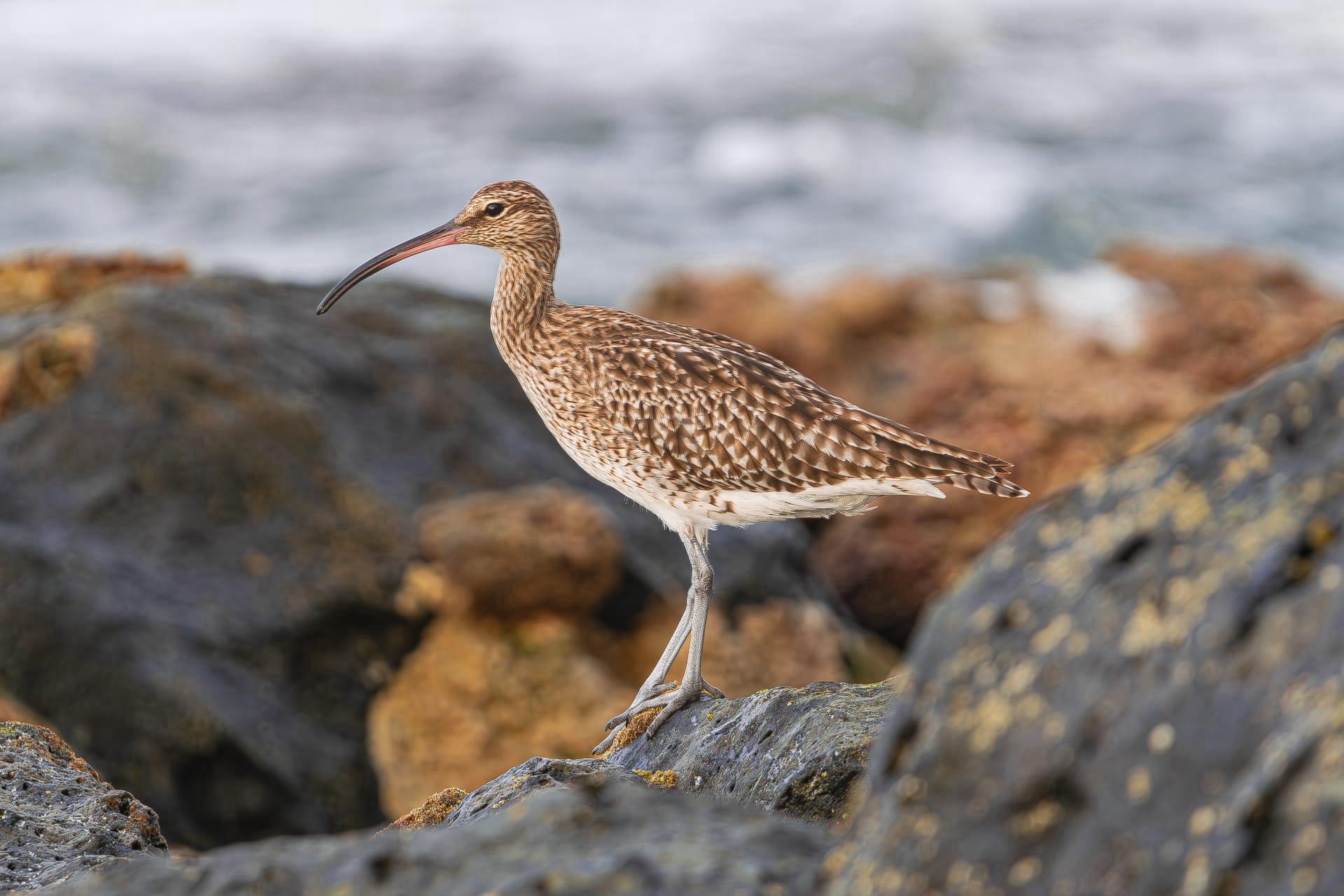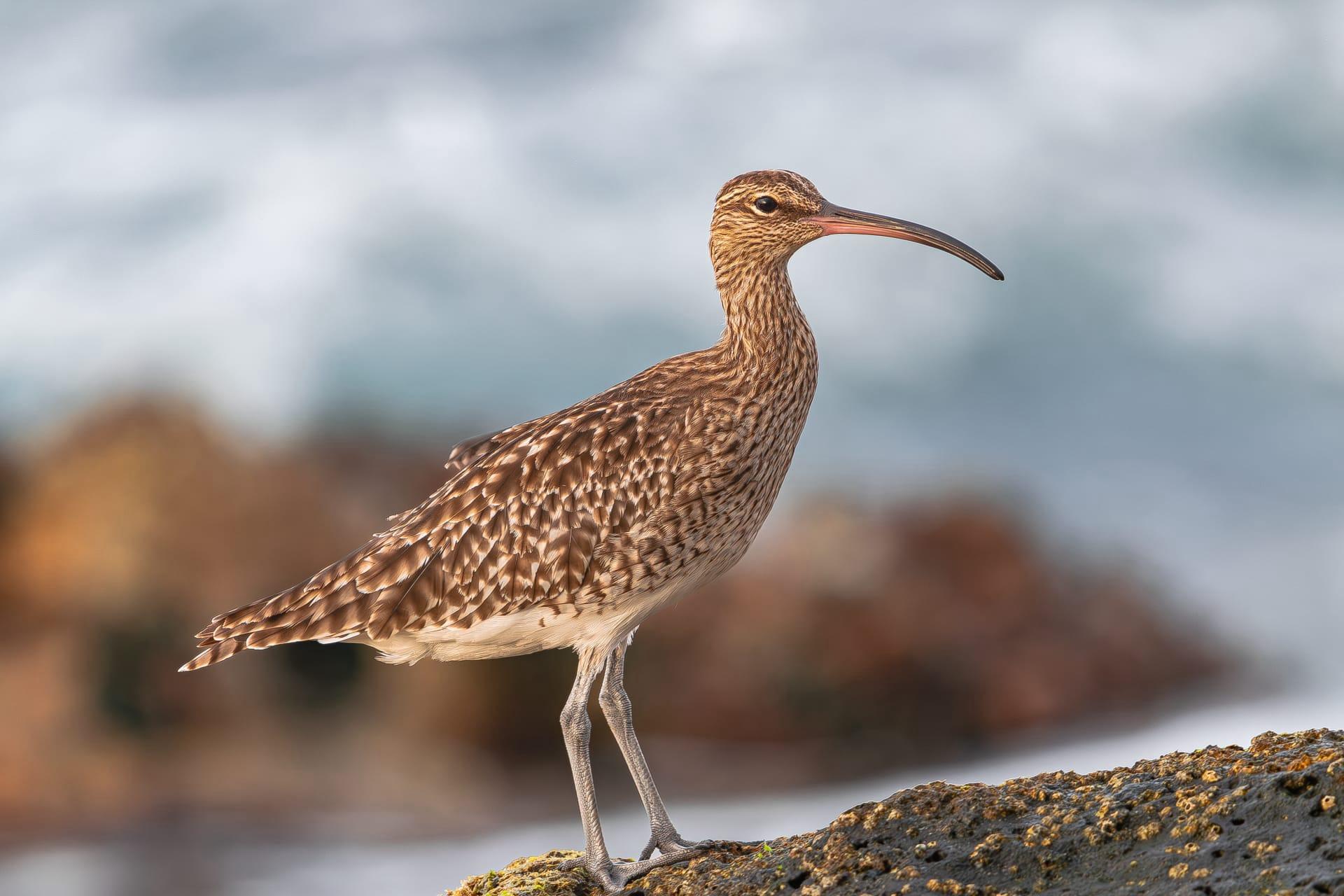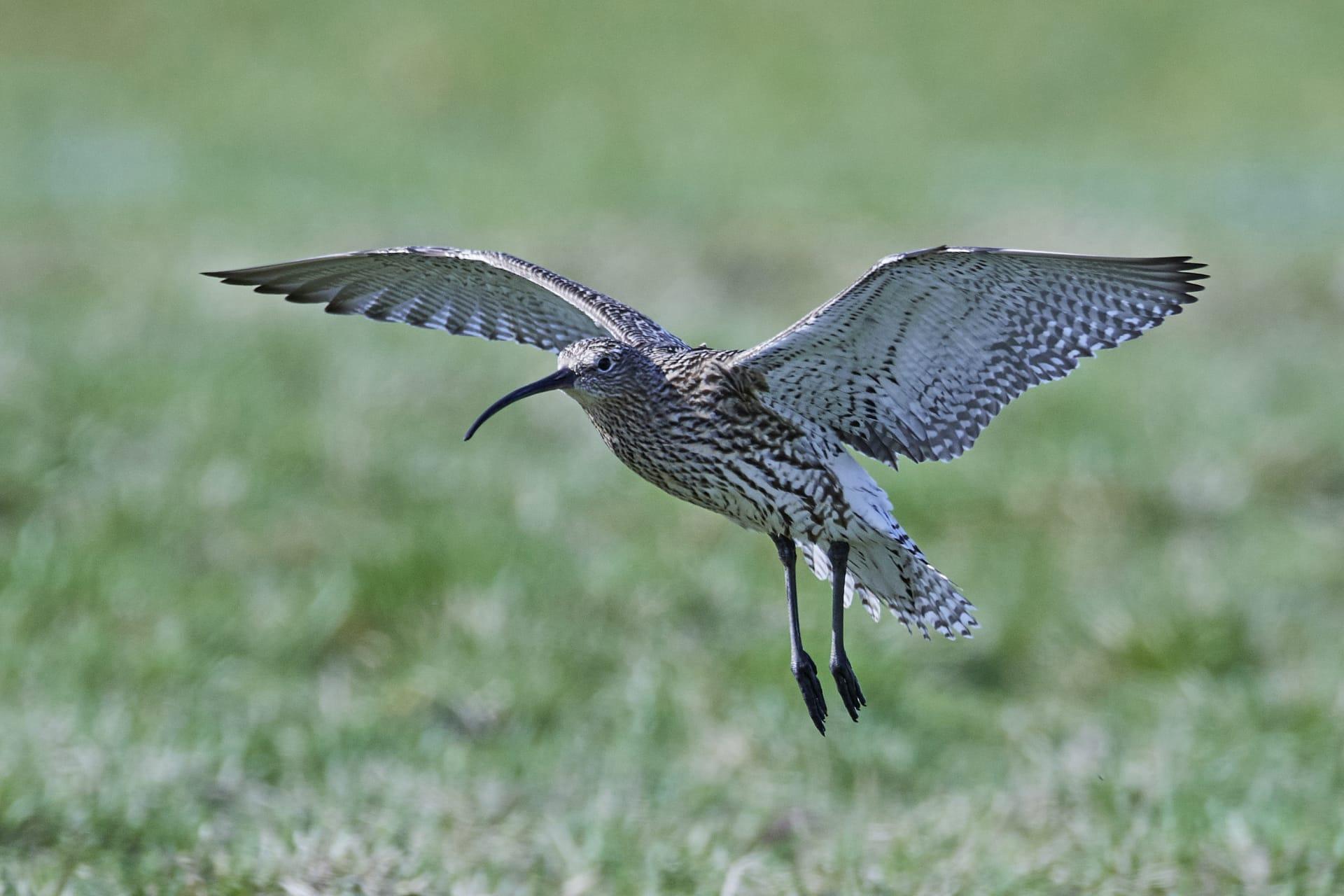Curlew Characteristics
- Home /
- Mini Encyclopedia /
- Animal /
- Curlew Characteristics
1
Curlews, recognized for their slender bodies and long legs, are a fascinating group of wading birds belonging to the family Scolopacidae. On average, these birds measure about 50 to 60 centimeters in length and weigh around 500 to 1,000 grams. Their lifespan in the wild typically ranges from 20 to 30 years, a testament to their resilience and adaptability.
One of the most distinctive features of curlews is their long, downward-curving beak. This beak, which can be up to 20 centimeters long in some species, is not just a striking visual trait but also a highly functional tool. It's used for probing into mud and sand to extract small invertebrates, a primary food source. This specialized beak allows curlews to feed in habitats where food might otherwise be inaccessible, demonstrating a remarkable adaptation to their environment.

2
Question: Why are curlews often seen standing on one leg?
Answer: Curlews, like many other bird species, frequently stand on one leg to conserve body heat and energy. This behavior is particularly prevalent in colder environments. By tucking one leg into their feathers, they reduce heat loss and can maintain their body temperature more efficiently. This adaptation is essential for survival, especially in the habitats where curlews are found, which can often be cold and exposed.

3
Curlews exhibit a graceful, almost balletic style of movement. They are known for their smooth, gliding flight, which is characterized by slow, deliberate wingbeats. This style of flight conserves energy, crucial for their long migratory journeys. On the ground, they move with a stately, deliberate walk, often scanning the ground for food with their sensitive beaks.
In terms of feeding behavior, curlews are opportunistic and skilled hunters. They primarily eat small invertebrates like worms, shellfish, and small crustaceans. Their long beaks are perfectly adapted for this, allowing them to probe deep into mudflats and sandbanks. Their feeding technique involves a quick stabbing motion, followed by a sensitive feeling through the beak to detect and extract prey.

4
Curlews are predominantly found in coastal regions, wetlands, and mudflats, although some species also inhabit grasslands and arable land. These environments provide the rich, invertebrate-laden soil that curlews need for feeding. They're also found in estuaries and along shorelines, where they can take advantage of both terrestrial and marine food sources.
As for reproduction, curlews are ground-nesters, usually laying their eggs in simple scrapes in the earth. These nests are often camouflaged to protect against predators. The breeding season sees a shift in their behavior, with the normally solitary curlews becoming more territorial and vocal. The female typically lays 2 to 4 eggs, and both parents share incubation duties. The young are precocial, leaving the nest shortly after hatching but remaining under parental care for several weeks.

5
Book: "The Curlew's Cry" provides an in-depth exploration of the life and habitat of curlews. Written by an American ornithologist in the late 20th century, it delves into the behaviors, migration patterns, and ecological significance of these birds. The author's passion for bird conservation shines through, making it not just informative but also a compelling read for nature enthusiasts.
Book: "Flight of the Curlew" is a British publication from the early 21st century, focusing on the migratory journey of curlews across continents. The author, a renowned birdwatcher and conservationist, combines scientific research with personal observations to paint a vivid picture of the challenges and triumphs these birds face during their migrations. This book is both a tribute to the curlew's resilience and a call to action for their conservation.